G. J. Coles Embassy brand
Just love this advertising!
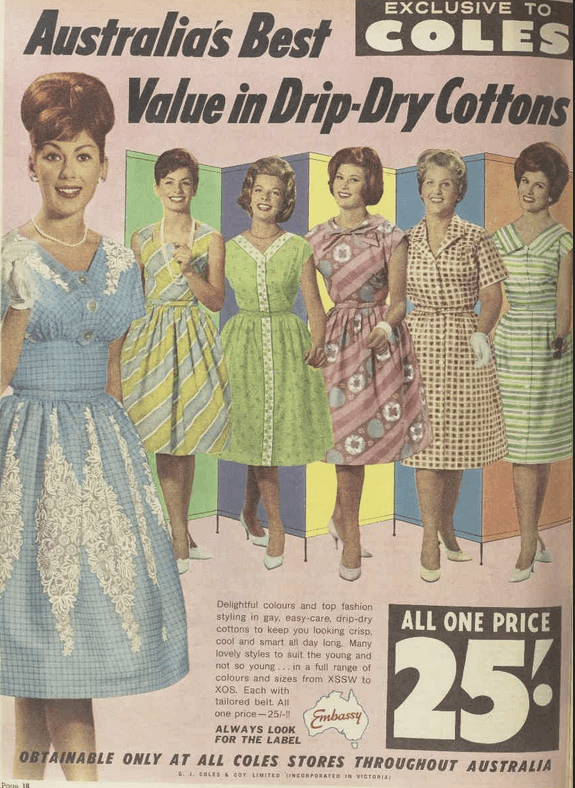
Australian Women’s Weekly, 7th November 1962 page 16. As it says, “Always look for the label.”
You may wonder how I date cards of Embassy buttons. Pricing helps. On 14th February 1966 our currency changed from imperial to decimal. From that time until 1st August 1967 there was a “dual currency” transitional period. You may notice old goods with dual prices printed. You may also have the same buttons carded with pre, dual and post dual pricing allowing you to date to early 1960s, 1966-7, and post August 1967.
The artwork also changed. With a little detective work looking through old advertising, I’ve been able to roughly date the artwork/logo changes. See the Coles/Embassy page.
1929-1931 Embassy brand gramophones
The Embassy brand was originally found on gramophone records for sale through G. J. Coles & Coy. Note also the Coles logo.
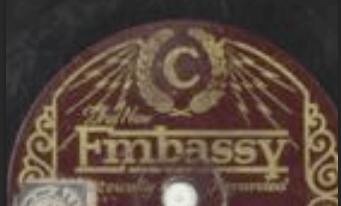
This detail is from a gramophone in the Museum Victoria collection.
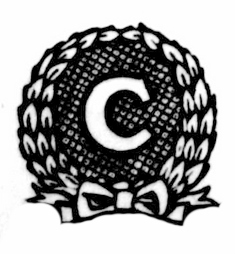
The Coles logo from newspaper advertising in 1928.
1930-50s
According to the history ” Quality, service and value” by Rodney Stevenson, by 1932 Embassy was “a trusted brand of cutlery, electric light globes, spark plugs and paint.” In 1936 I found chocolate was sold under the Embassy branding, and in 1938 razor blades and lunch wrap.

The Daily Telegraph (Sydney), 9th February 1938 page 25 souvenir section. Coles had been operating for around 19 years.

The Daily Telegraph (Sydney), 29th April 1938 page 4.
Coles had no display advertising over the war years. Newsprint was in short supply, making advertising space very expensive. Also, in general goods were in short supply, with materials diverted to war time production and imports reduced. Even post war, shortages continued for some times, with rationing only phased out gradually from 1945 until 1948. The next usage of the Embassy brand showed a different cursive script.
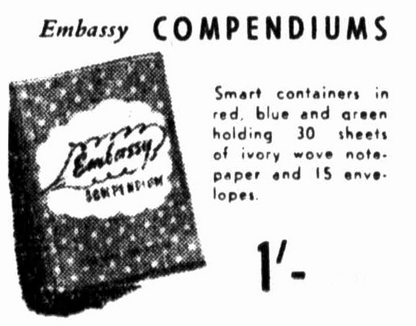
May 1947. This year Embassy tennis balls were advertised.
This is the script seen on what are perhaps the earliest cards of Embassy buttons, dating from around 1949 by the size of the cards.
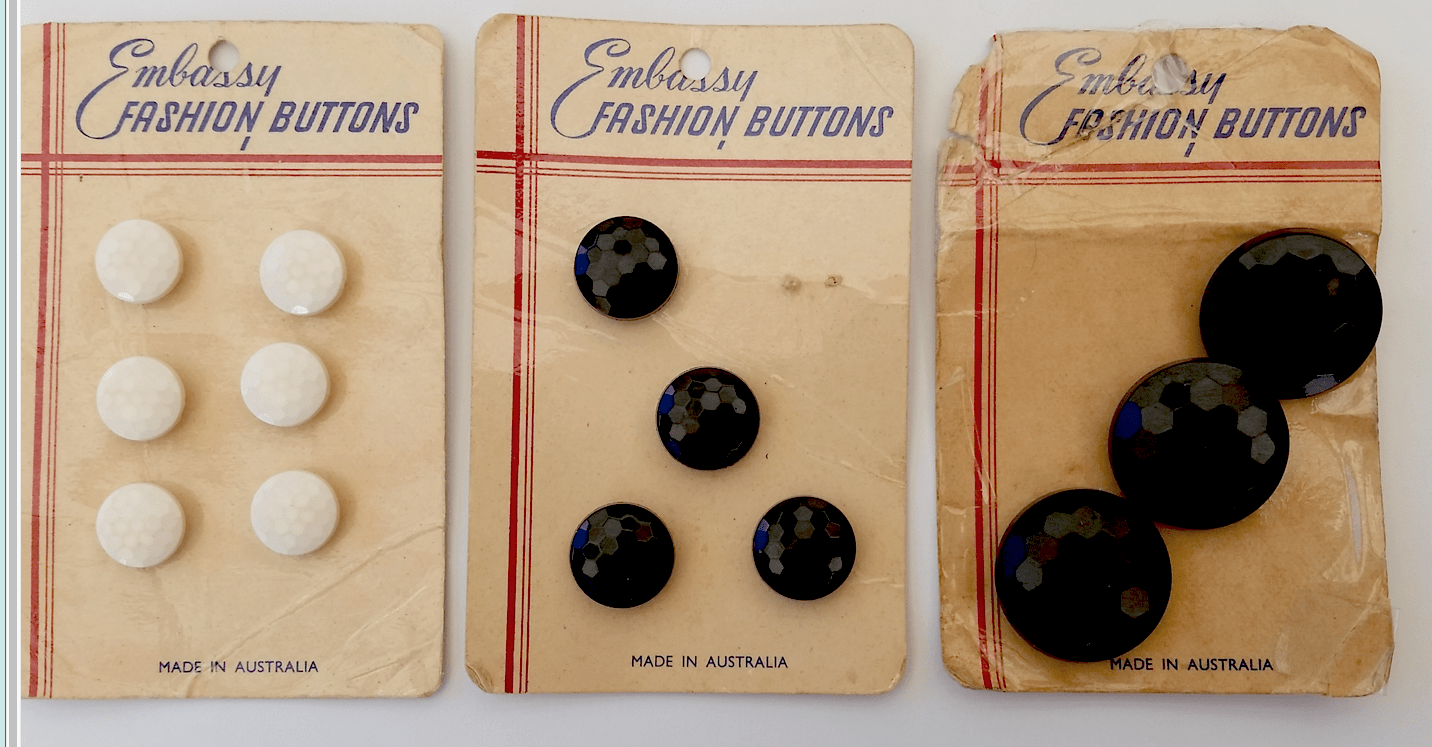
The next change was the introduction of the use of the map of Australia along with the cursive script ‘Embassy’. Note that the word Embassy was not at this stage printed within the map outline.
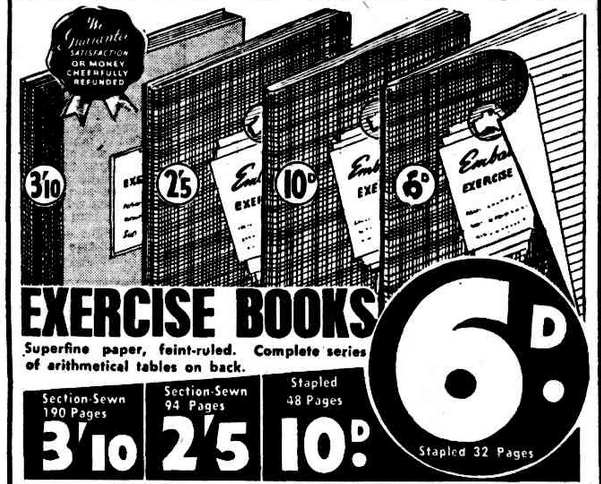
1947-53. The name is now written in a cursive script. The map of Australia appears separately.
In 1952 an intriguing illustration of a “Embassy vacuum flask” appears. It seems to show the word Embassy in block script within a hexagon shape. Was this variation of the logo the same as appears on some cards of buttons?
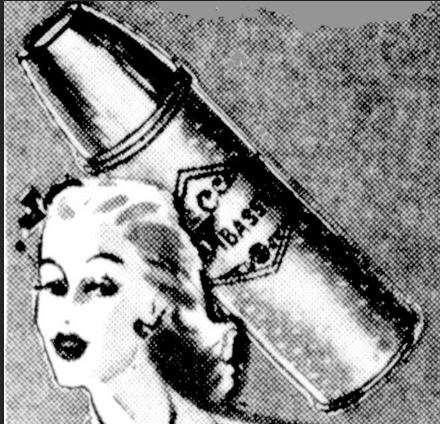
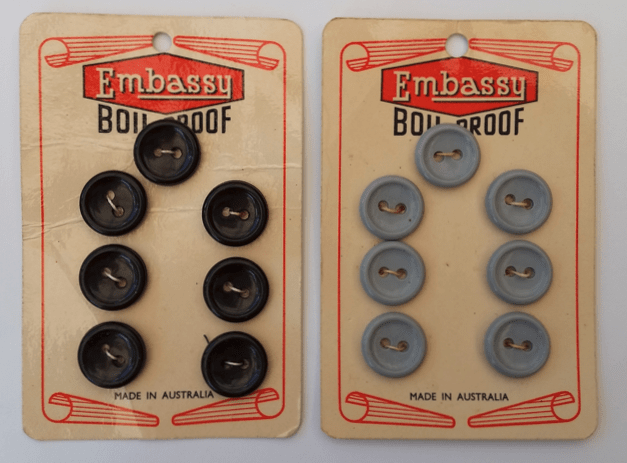
This block script is actually the original from the 1930s. Why did they return to it? Why were there several variations? Probably they all date from around 1952 until 1958. In 1958 Coles bought the Dicken’s chain of grocery stores to transition from variety stores to supermarkets, just behind Woolworths who done so in 1957. From then the Embassy branding was used for a multitude of groceries, clothing, toys, household items, etc.
It is worth pointing out that these buttons were distributed by Coles, not manufactured by them. The button designs indicate that General Plastics was the original supplier. Around 1958 General Plastics copied the feature of added cotton that G. Herring had been using on their own cards since 1949, and the shape of the Embassy cards changed as a result. The corners are no longer rounded, and the waist, to allow the 6ft. of matching thread to be wound on, appears. Along with these changes, printed pricing appeared on the cards for the first time.
From 1963 General Plastics was bought by G.Herring with this company taking over supply of Embassy branded buttons.
1959-1970
In 1959 they returned to the map of Australia and the cursive script, but this time the name is within the map outline. This was used until 1970.
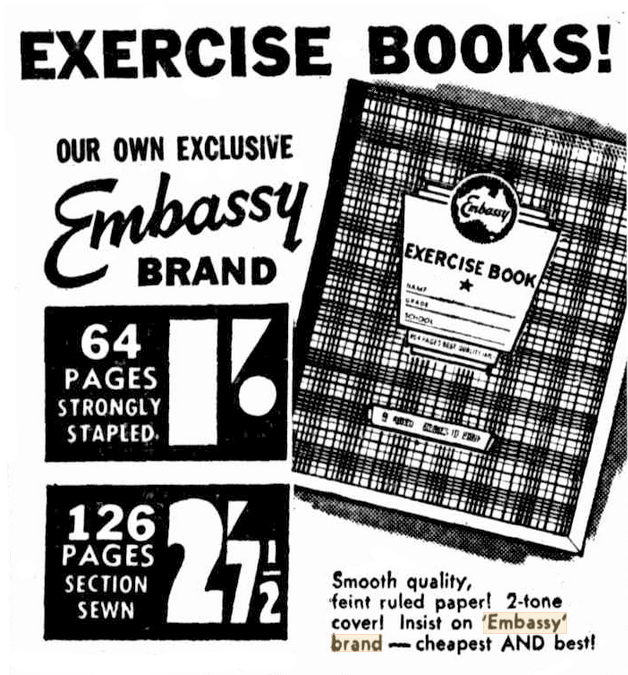
1959-1970. ‘Embassy’ is now printed within the map.
1971-1994
In 1971 a new logo was introduced. The map outline was gone. The cursive script “Embassy” was placed within a parallelogram with rounded corners, where it would stay until the brand was dropped around 1994.
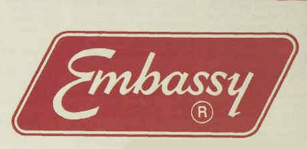
Unfortunately for me, they never featured buttons in their advertising!
For all comments and questions, please use the Contact page.
